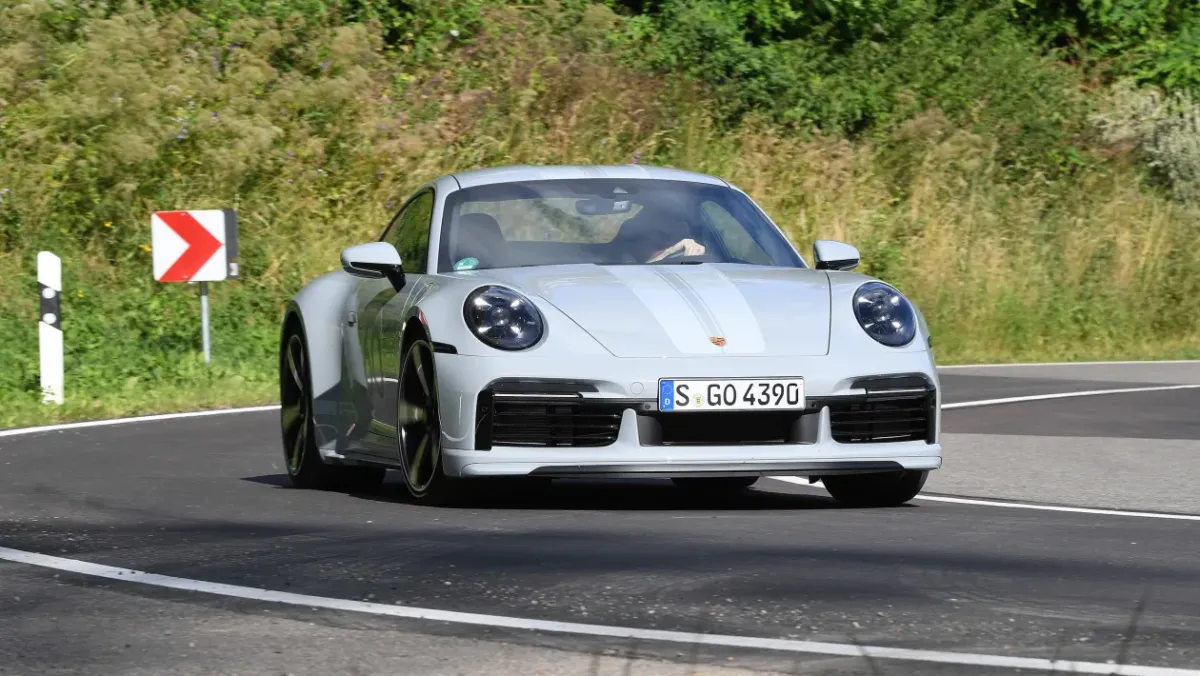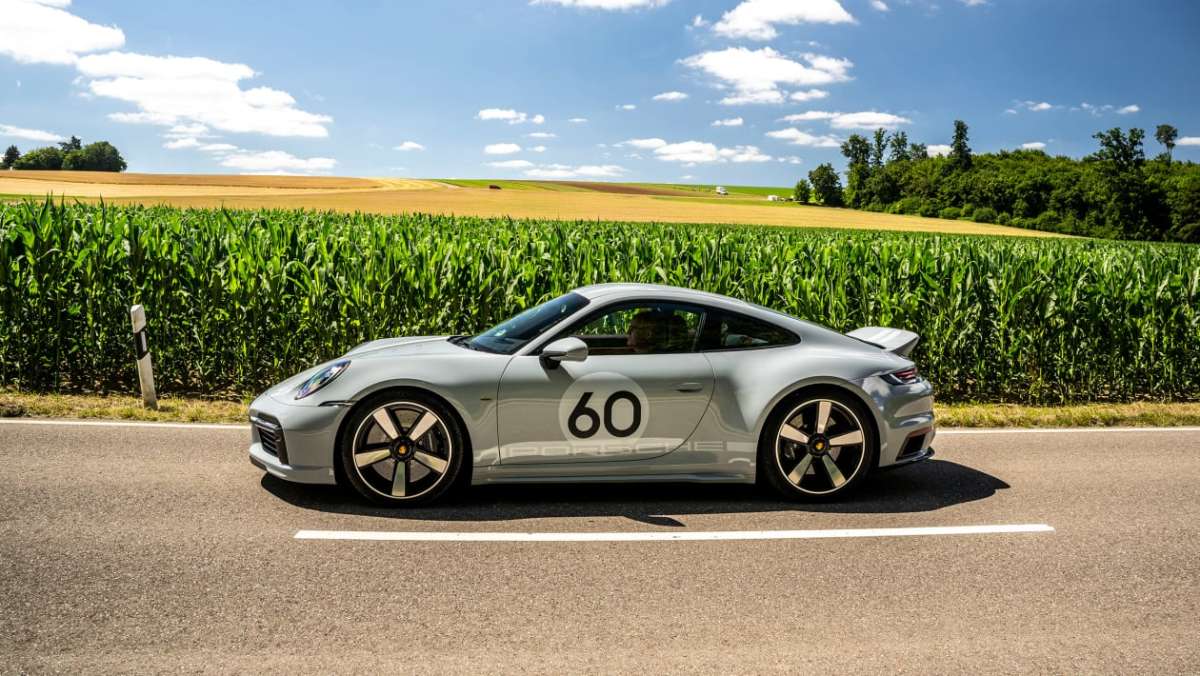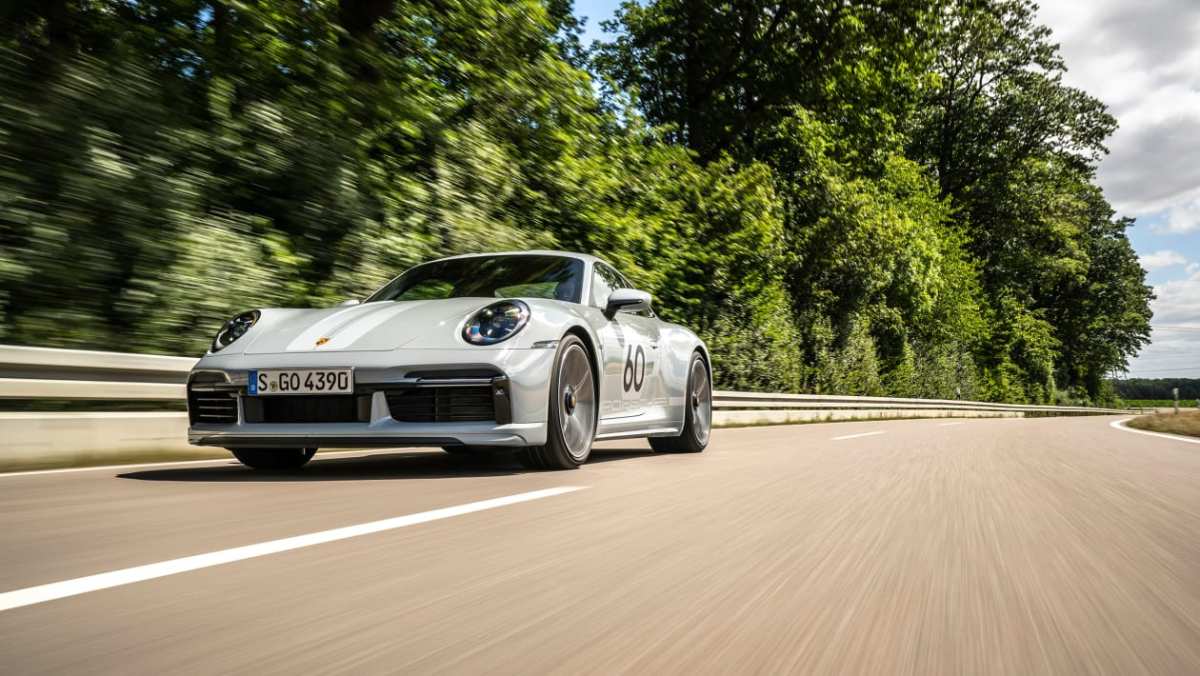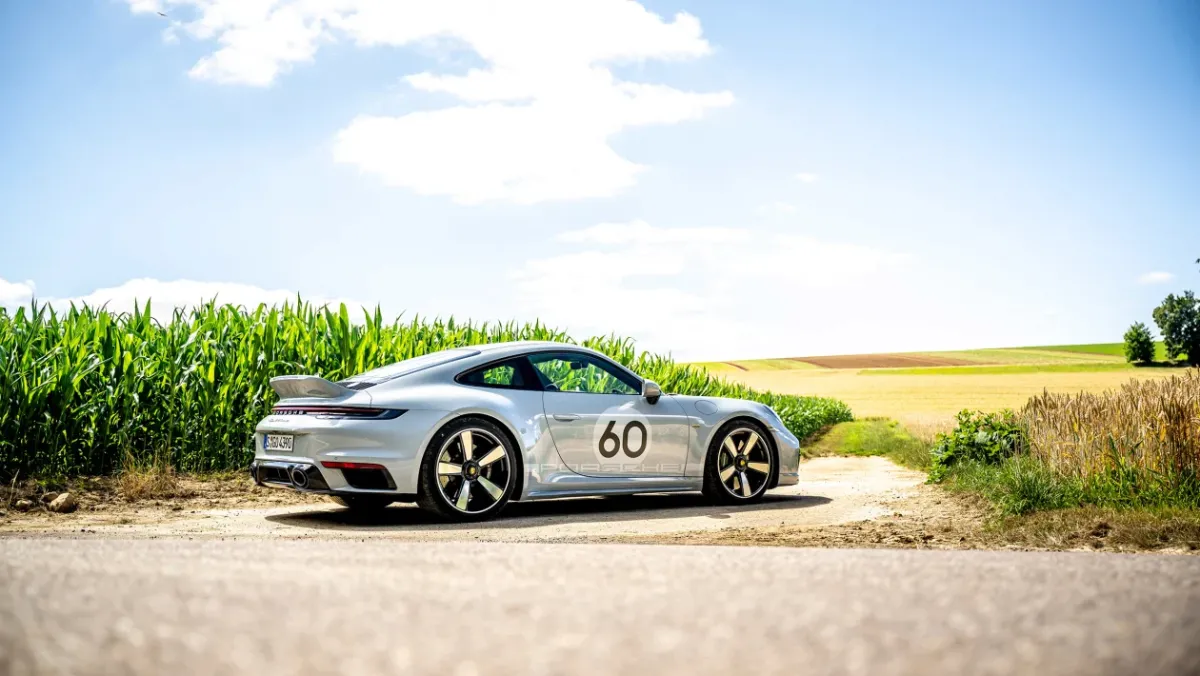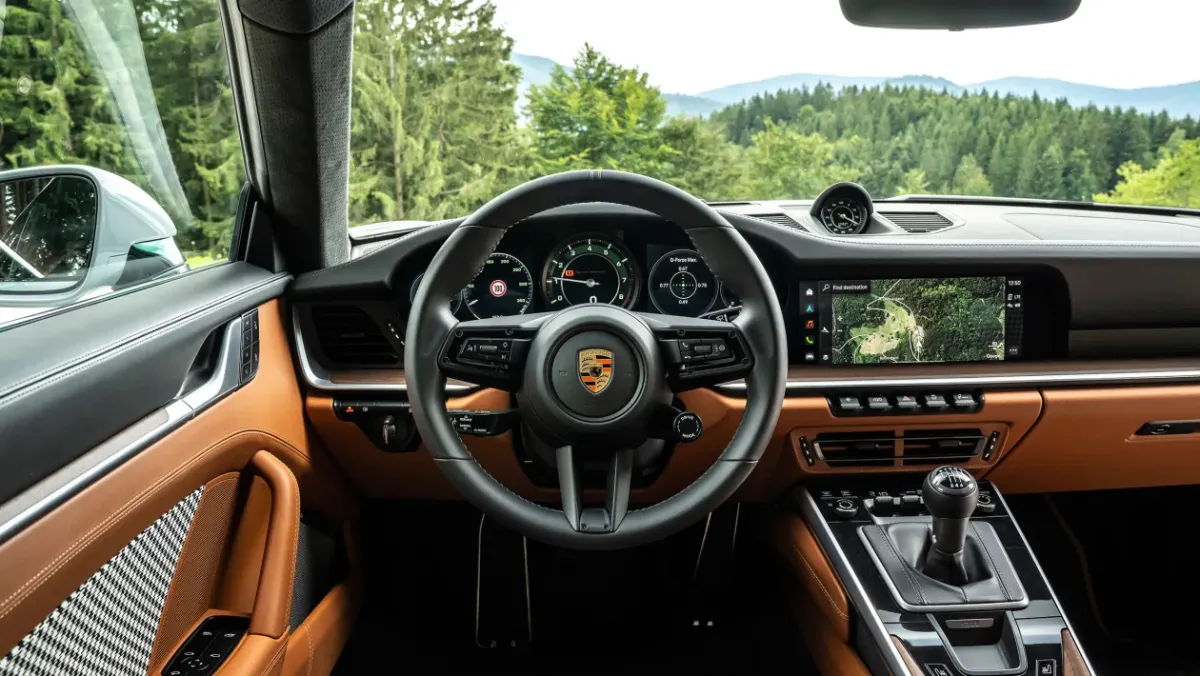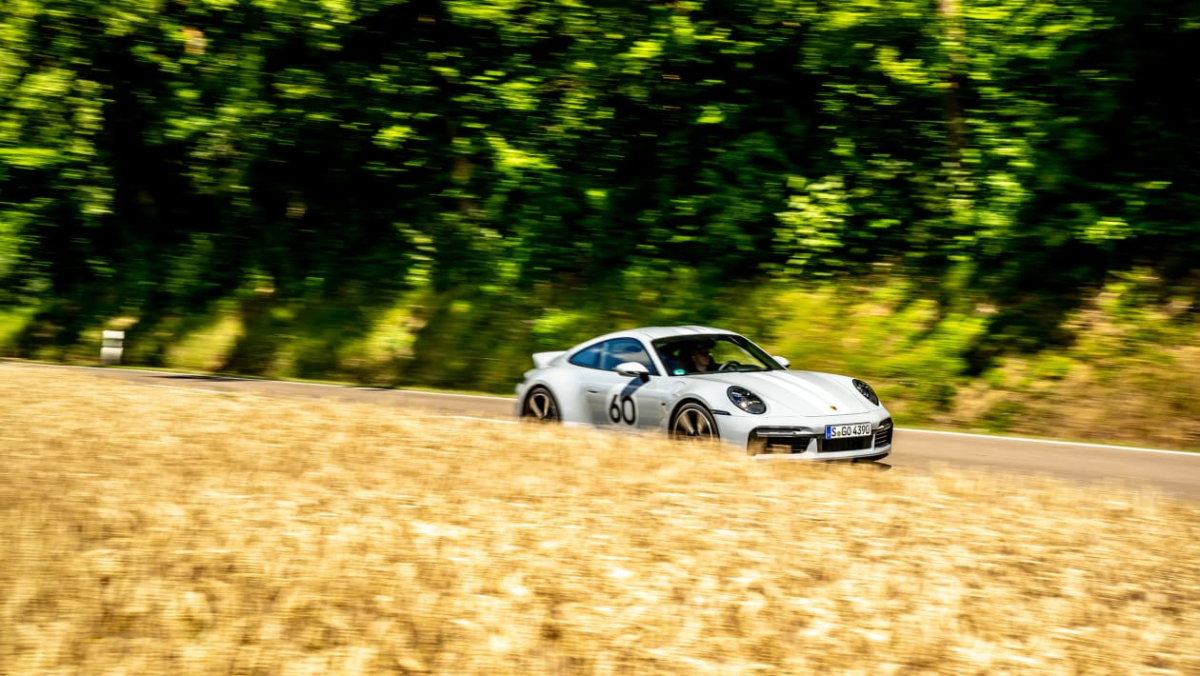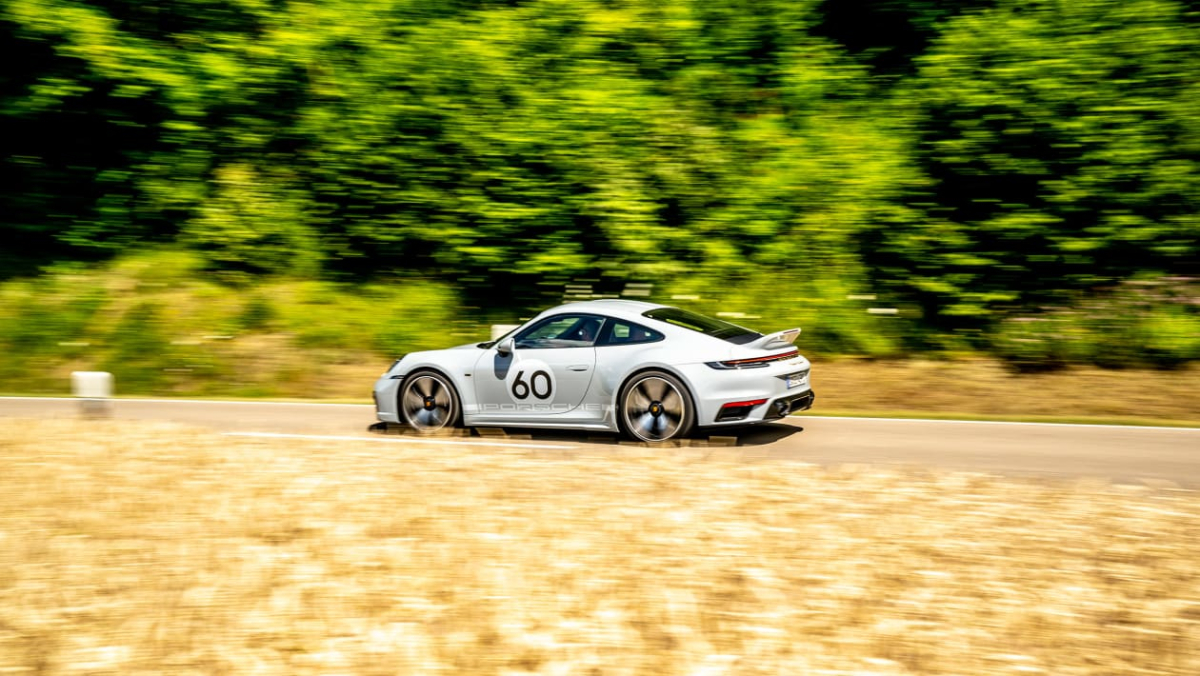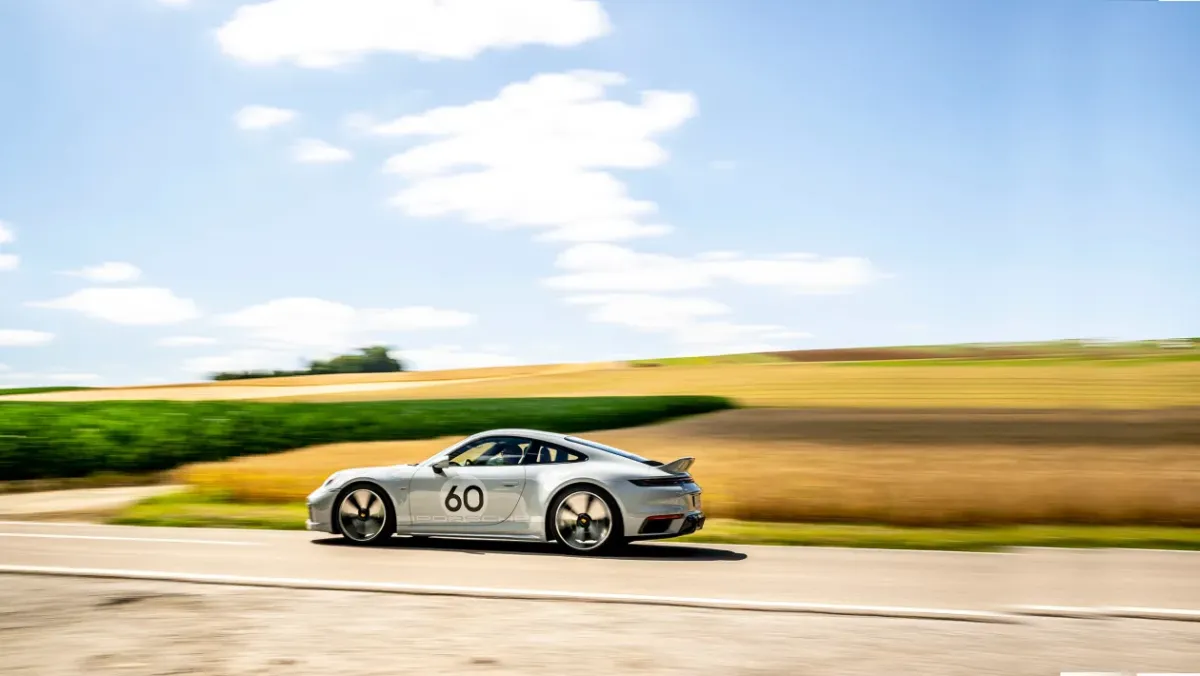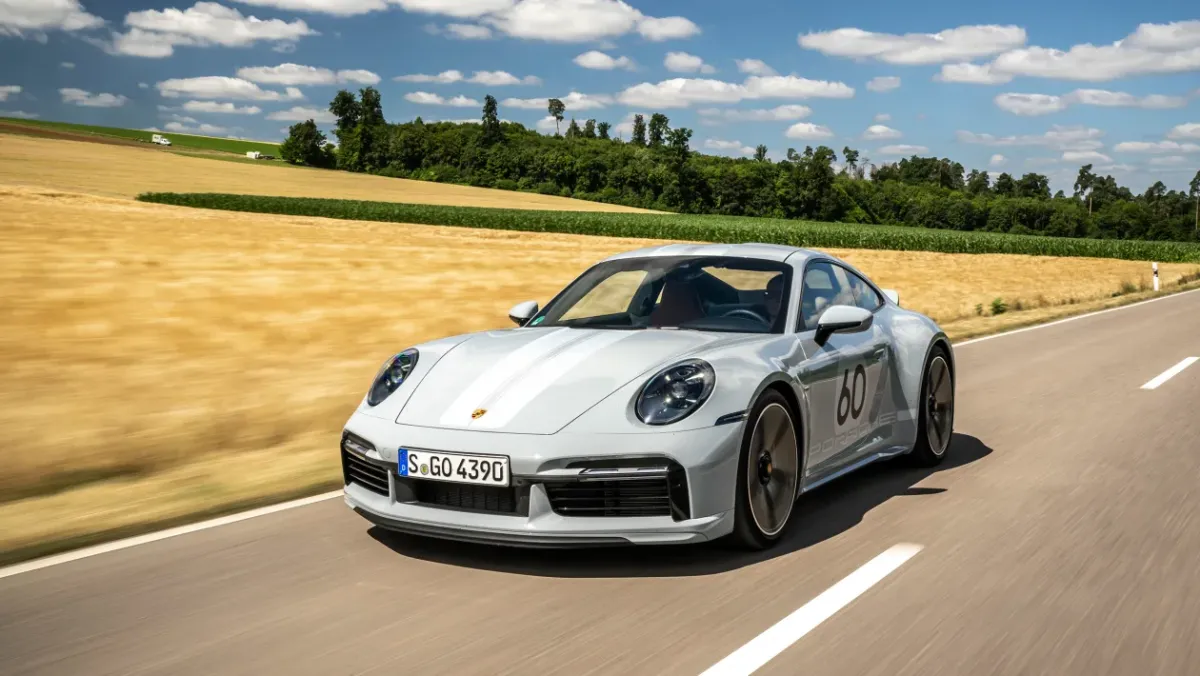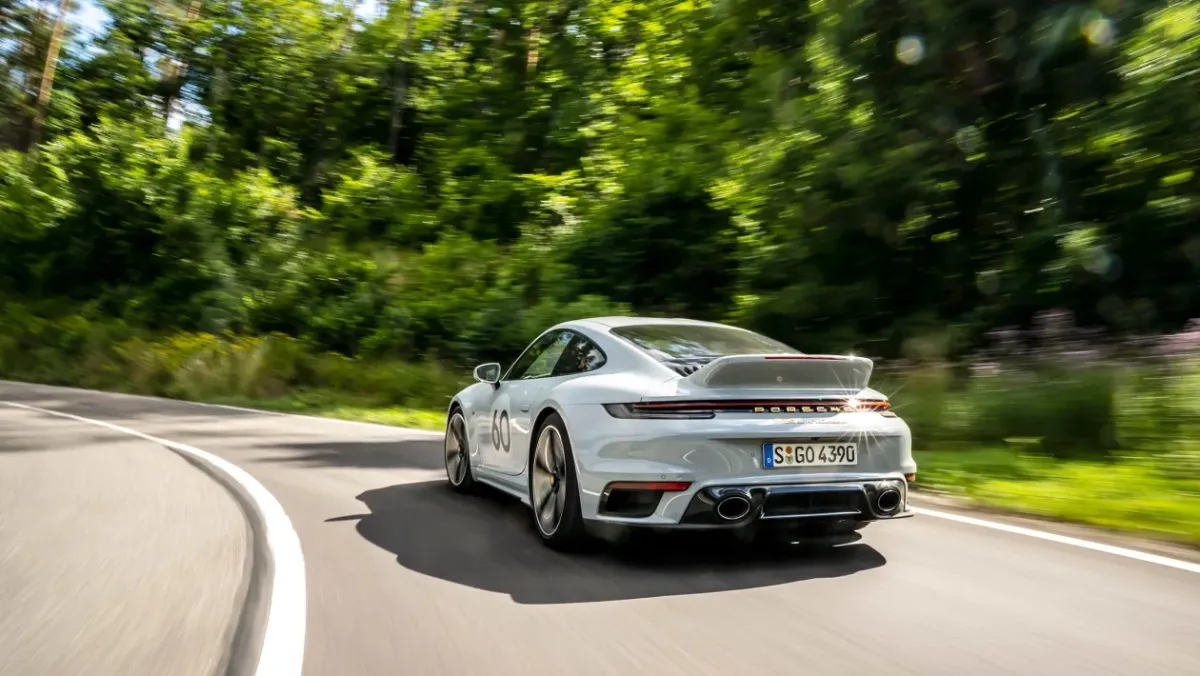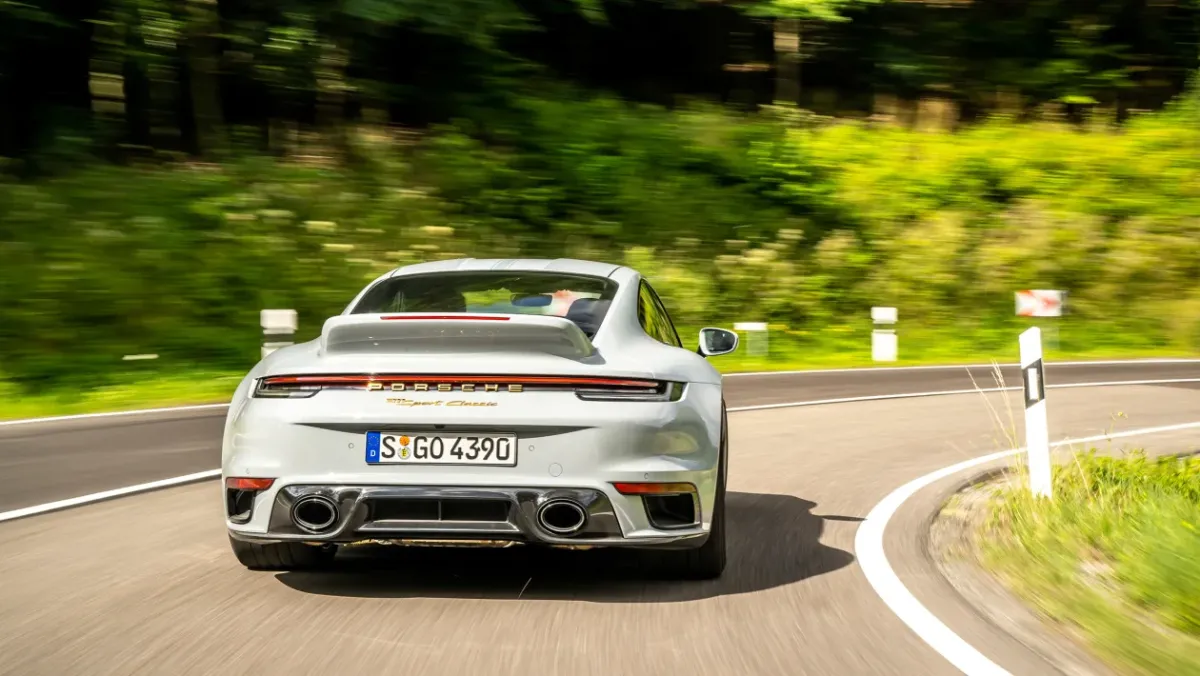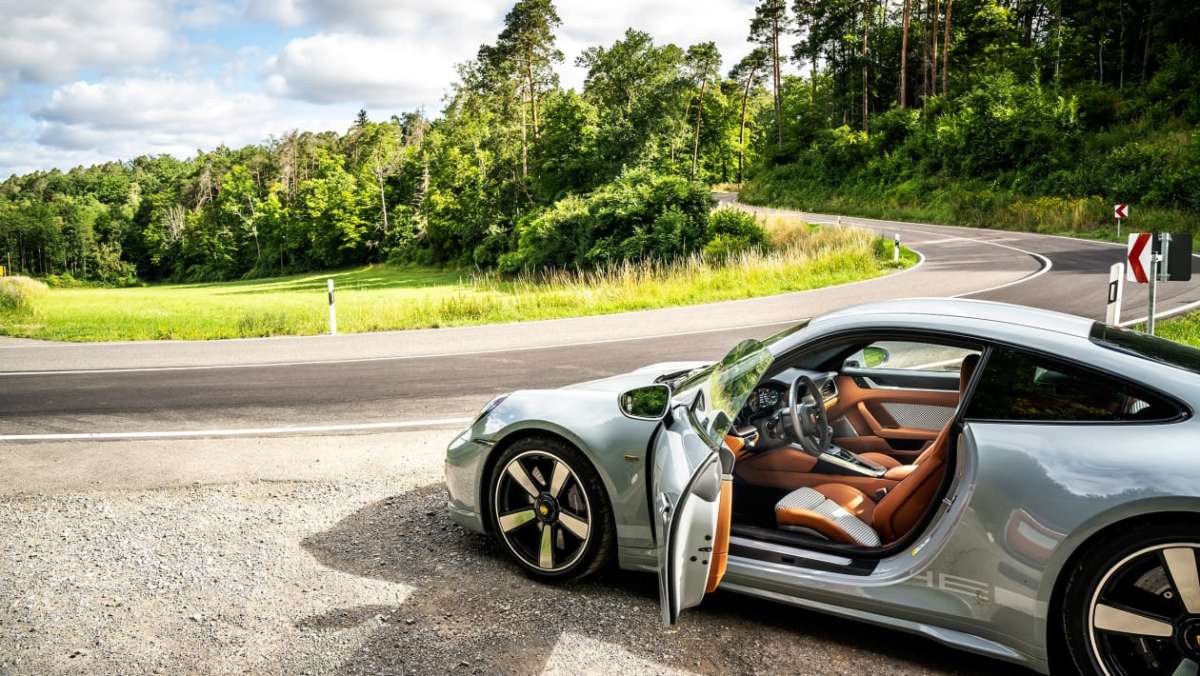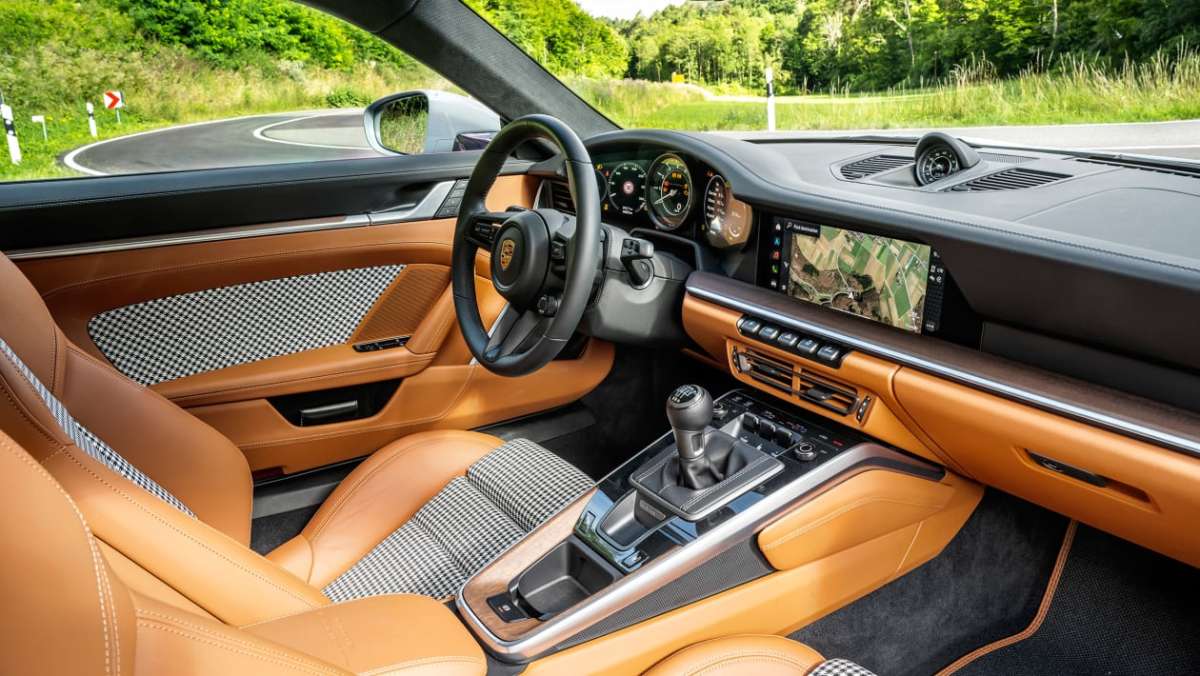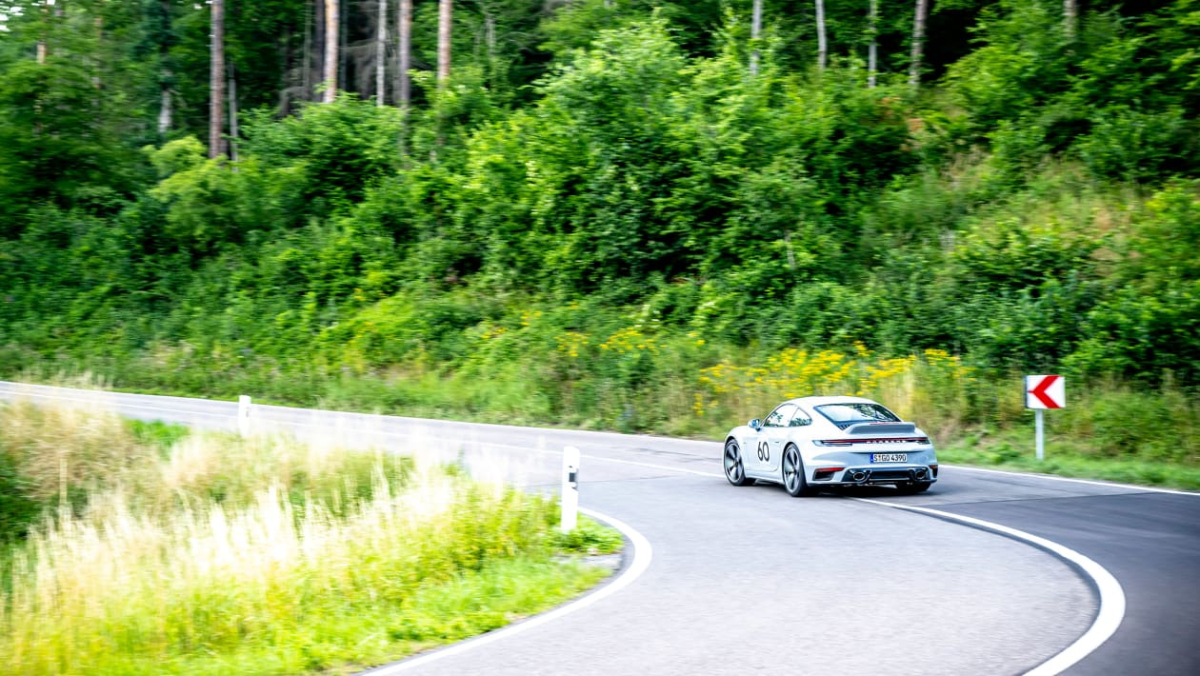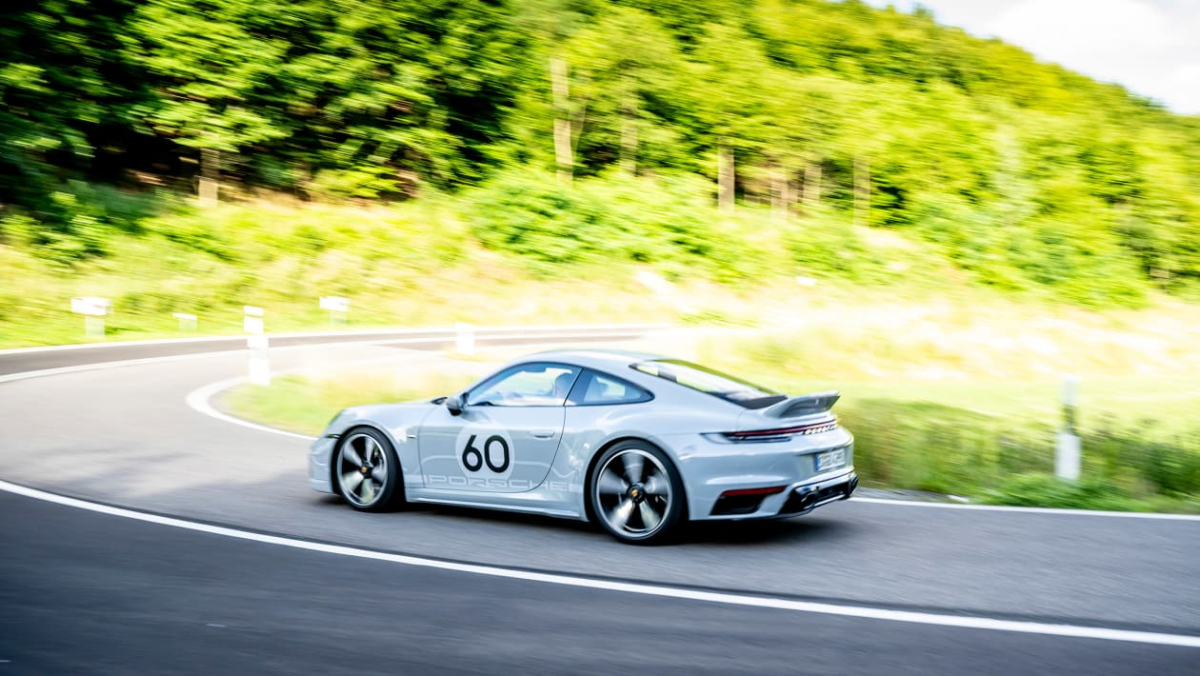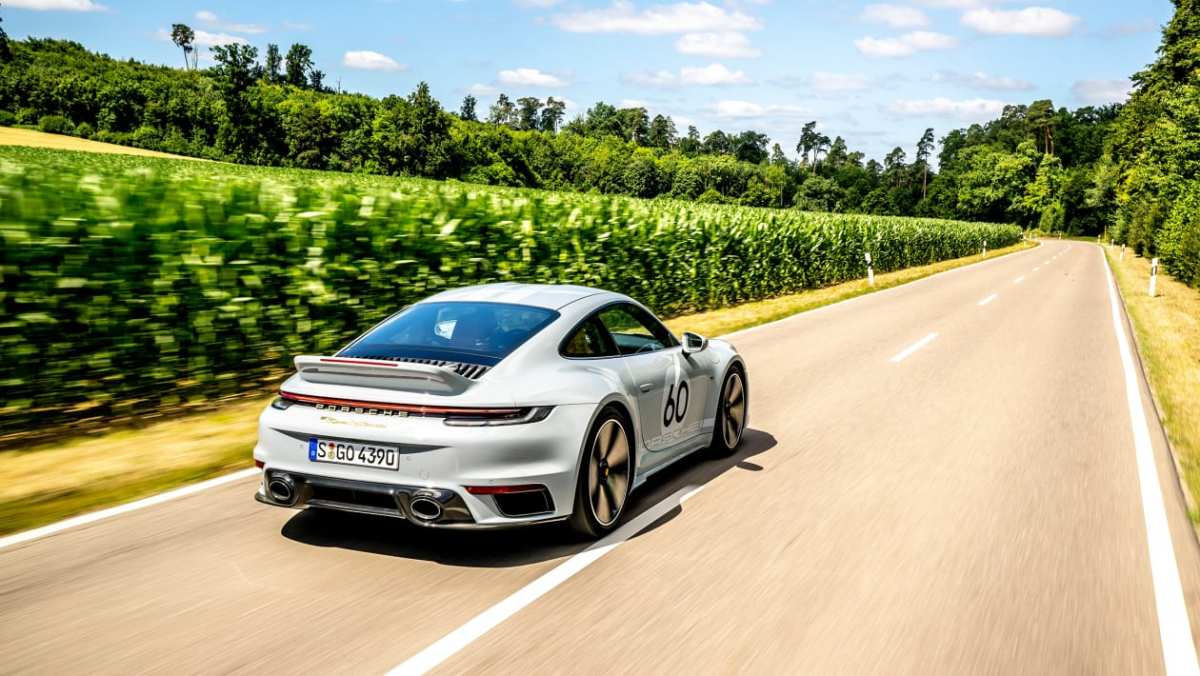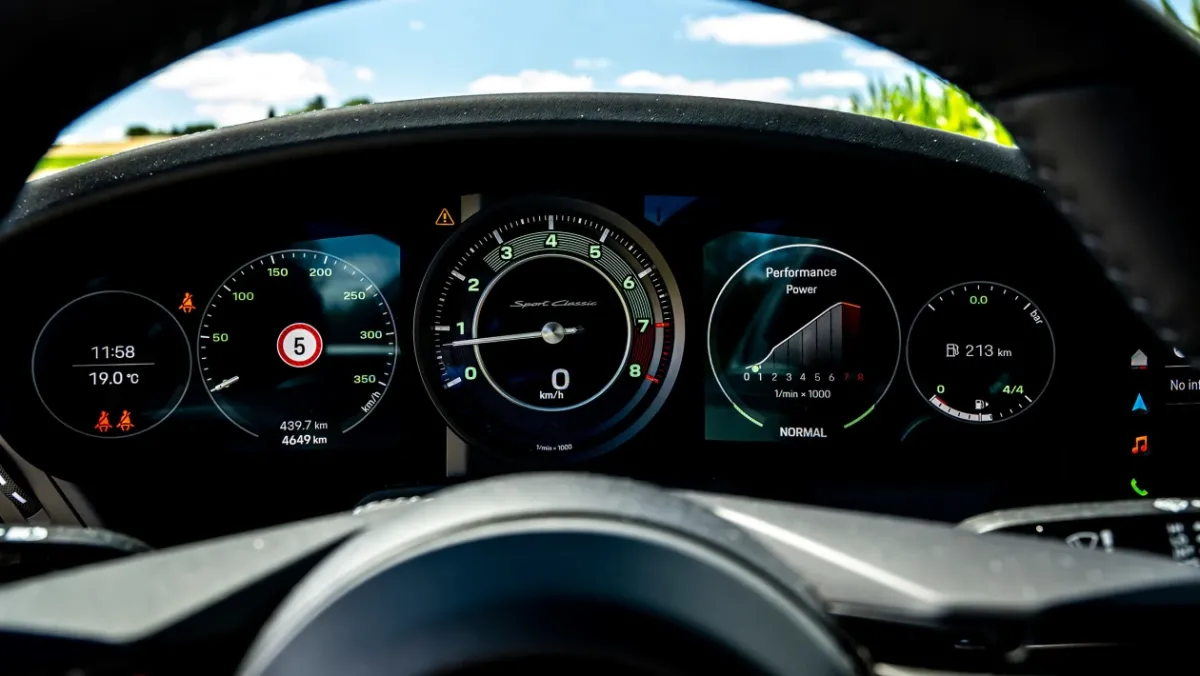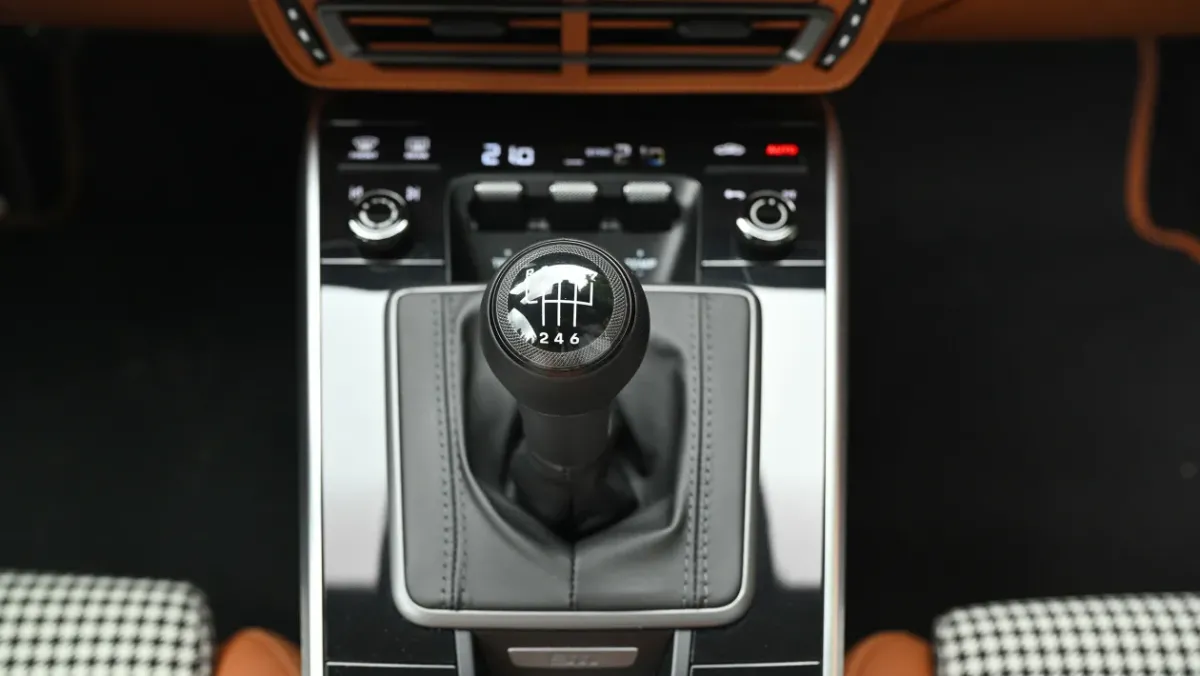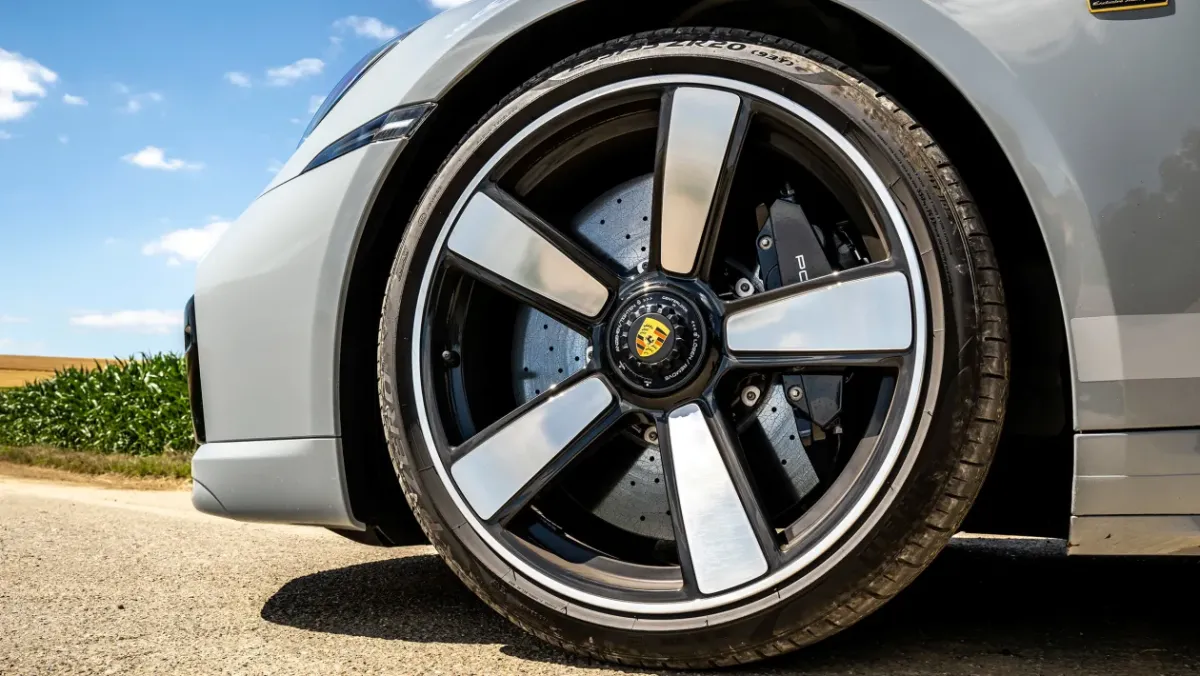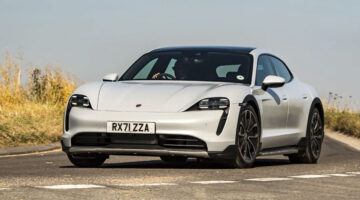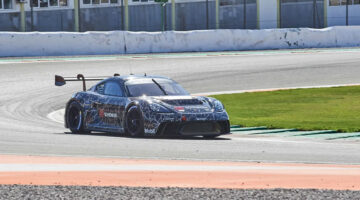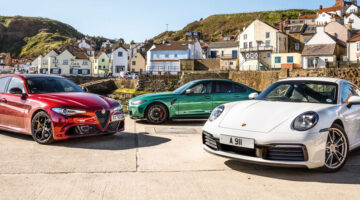The second generation 911 Sport Classic combines a bespoke body and powertrain, delivering a unique driving experience.
| Bespoke design and detailing, immersive powertrain | |
| Manual box could be sweeter, expensive and not that rare |
There are days when you feel you can’t move without the announcement of a new restomod arriving to great fanfare and claims of it being so cool it’s broken the internet (if only). Alfas, BMWs, Datsuns, Ferraris, Porsches, Volvos it seems there’s very few cars people won’t restore to a specification combining today’s know-how with yesterday’s free thinking. Despite this, you won’t find Porsche using the restomod term anywhere when it comes to its latest Exclusive Manufaktur model, the 911 Sport Classic. Which is odd, because that’s pretty much what it is.
A brief recap on the Sport Classic goes something like this: the original was introduced in 2009 and featured the wider body of the Carrera 4S mated to the factory Power Kit engine upgrade increasing the naturally aspirated flat-six to a 404bhp peak. A six-speed manual gearbox was the only transmission offered (the equally limited Speedster of the time was PDK only) with every SC rear-wheel drive.
Then there was the body. Out went the active rear wing and in came a fixed ducktail, and on went a new roof skin with a double-bubble design. A set of updated Fuchs rims filled the arches, the pale grey paint was accompanied by a pair of lighter grey stripes. Inside was a chocolate brown interior with houndstooth inserts, retro-look green faces for the dials and multiple details only available on the 250 examples Porsche made. At $152,850 it was more expensive than the then equivalent 911 Turbo.
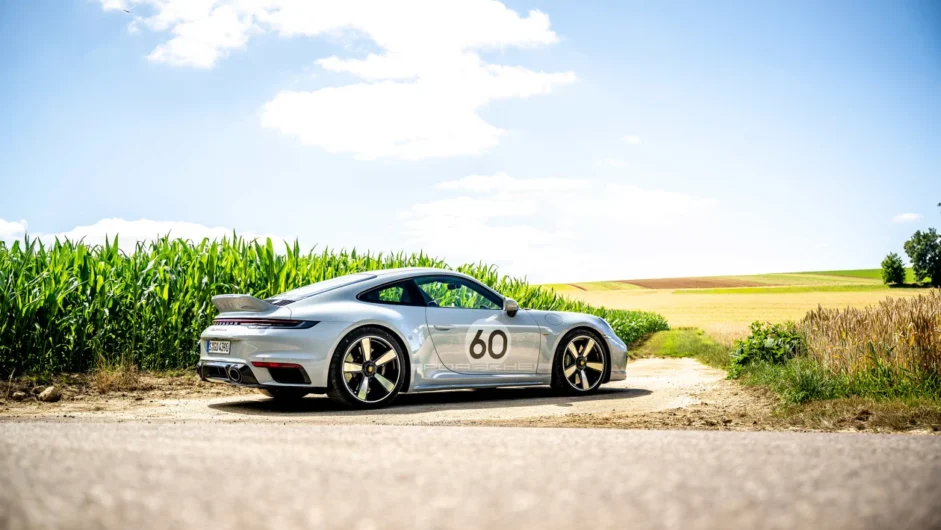
Which might explain why it was a bit of a slow burner, until recent years when you’ll now need a minimum of two hundred grand to own an original Sport Classic. Although that’s still $16,000 less than this new one, which is equally bespoke in specification.
Today’s new 911 Sport Classic, of which 1250 will be produced, follows an equally bespoke route as its predecessor although it’s based on a 911 Turbo rather than a Carrera model.
It has more on road presence than the original, which can be put down to the 992 on which it is based having a larger footprint than the original’s gen2 997, resulting in exaggerated design features. The ducktail occupies more real estate across the rear of the car with the opening at its leading edge providing the air for the engine now the Turbo’s distinctive rear arch inlets have been blocked off.
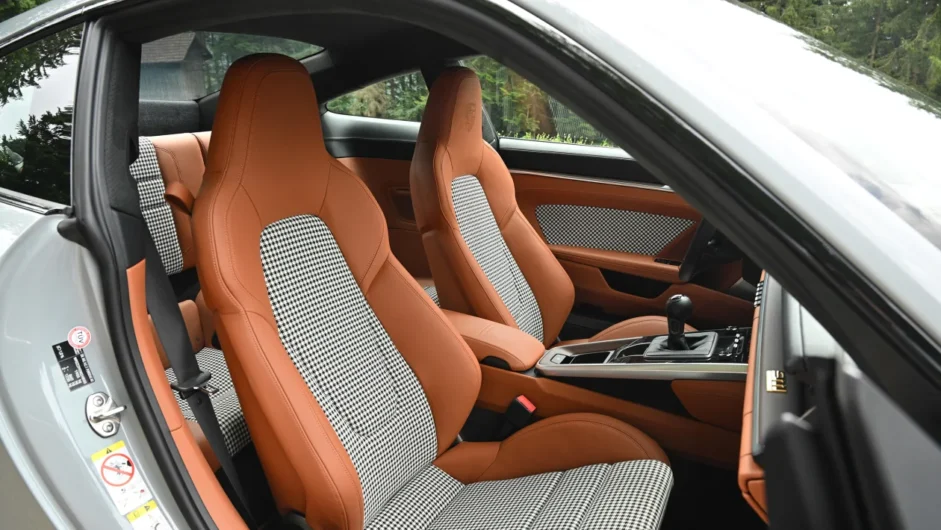
It’s the closing of the Turbo’s air intakes (achieved by using the pressing machines that make the body panels for Porsche’s pre-series production cars) that provides the illusion of those rear haunches appearing even more stretched than they do on the donor car. Combined with 21-inch Fuch-inspired wheels that borderline caricatures of themselves, their spokes reaching so far to the outer edges of the rim. Interestingly, the carbon skinned double-bubble roof doesn’t look as prominent as before and the door graphics do very little to compliment the hand painted stripes.
Inside there are no such design collisions, it’s a simple execution of a modern-retro interior done to perfection. Or rather it is if you stick with the heritage interior trim options that retains the black or cognac leather with houndstooth inserts, unpolished wood trim that knocks the piano black alternative into the next stratosphere. It feels and looks special, less of a series production car and more of a 911 that’s been crafted for a specific need. Which explains why Porsche offers a handful of the SC’s heritage trim options on regular Carrera and Turbo models.
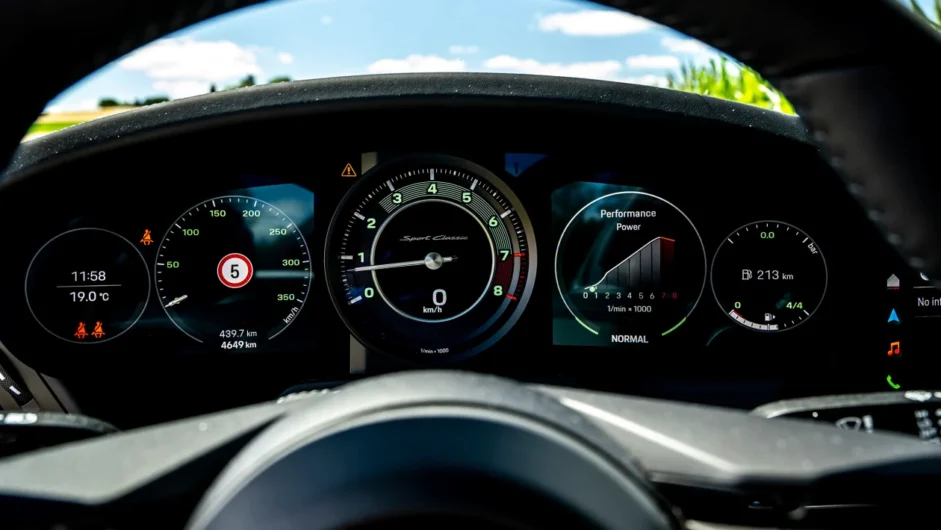
Talking of Turbos, the new Sport Classic not only borrows the big man’s body but its engine, too. Detuned to 542bhp compared to the entry level Turbo, torque also takes a dip to 442lb ft (down 111lb ft and only 20lb more than a GTS) to prevent the seven-speed manual gearbox – the six-speed manual used in the GT cars doesn’t fit the Turbo motor – eating itself when it all arrives at the rear tyres. Yes, this is a 542bhp, rear-wheel drive manual 911 and you haven’t been transported back to 2007.
As mouth watering as that combination sounds the Sport Classic isn’t a modern day 997 GT2, it’s more refined, less unhinged and a far different proposition to the early noughties headbanger. Its performance isn’t pin you to your seat fearsome, but in the way it launches itself and gathers momentum is more reminiscent of a big engined GT car than a GT department track car. Yes the first few gears fire it off the line and out of a corner with a hit a Carrera GTS wouldn’t keep up with, but it’s not as frantic as a Turbo nor as physical. And when you start to climb into its performance it settles at a rate that no current 911 can match, its performance and refinement totally unique, the larger capacity 3.7-litre flat-six and less frantic turbo delivery resulting in a more measured approach to enjoying a 911. It feels peak Carrera rather than de-tuned Turbo.
Despite the torque reduction there’s still plenty available from just shy of 2000rpm and the spread across the midrange makes every other gear redundant if you’re feeling lazy and want to short shift. Our test car didn’t possess the best shift across the gate, either, with second to third and fourth to fifth requiring more thought than its six-speed cousin. The reduction in power does make itself present as you reach the redline, the surge tailing offer as the needle swings ever closer to the engine’s peak. By normal standards it’s phenomenally quick, by Turbo standards it’s a madras compared to its vindaloo and phall brothers.
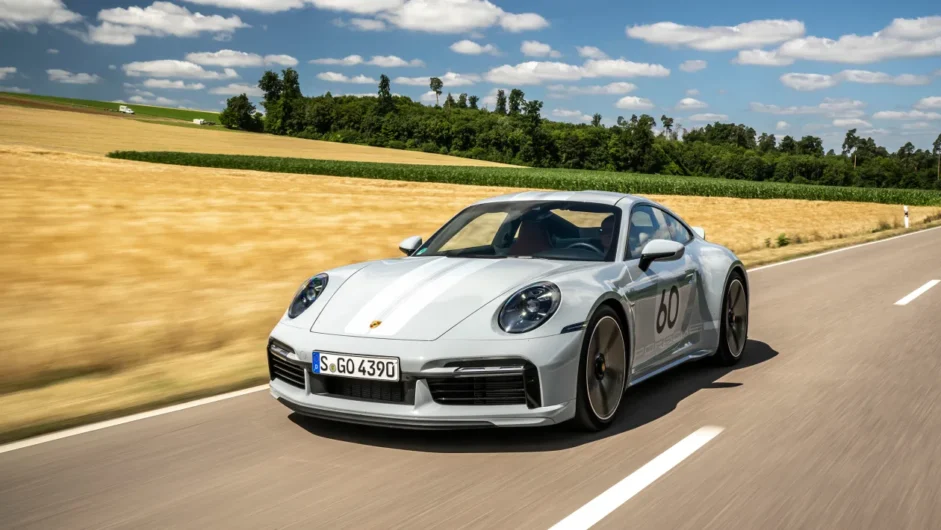
A blend of GTS and Turbo settings for the standard PASM damping gives it a quieter ride than either of the aforementioned, but it remains sharp when asked to change direction, the nose generating grip you can adjust well before it bleeds away, the car pivoting around your hips with the rear never feeling it wants to break away unless you intentionally decide to test the resolve of the rear Pirellis.
In a world where we seem to be chasing headline performance figures (4.1-seconds to 100kph, 315kph flat-out with 50kg of downforce generated by the ducktail at when you reach it) the Sport Classic feels more measured, more multi-faceted, less driven by a specific goal to do one thing better than everything and everyone else.
Its a slow burner, the new Sport Classic. It doesn’t possess the thumping performance of a Turbo nor the precision and flamboyance of the motorsport department’s GT cars, instead it sits in a unique position of the 911 line-up of being a car with its own very bespoke character. If Porsche could add this powertrain, which has undergone the same R&D test programme as every new 911 model, into a regular, more accessible Turbo body it would have a GT3 Touring for its Turbo family.
Prices and rivals
Leveraging the huge demand of its many 911 models, the Sport Classic’s price point is driven as much by its bespoke elements as its desirability.It costs from $238,060, but is pretty much fully-stacked with kit with all of its distinct elements included in the base price. (unlike models like the GTS where you’ll need to pay extra for the GTS interior…)
This puts it quite substantially above the Turbo S which starts at $187,715, and more in the realm of super GTs like the $265,315 Aston Martin DBS Superleggera or Bentley’s $243,840 Continental GT Speed. If two seats aren’t an issue, Maserati’s new MC20 will set you back from $208,075, but breaks the $220k barrier without much of a dive into the options list.
This article originally appeared at evo.co.uk
Copyright © evo UK, Autovia Publishing

